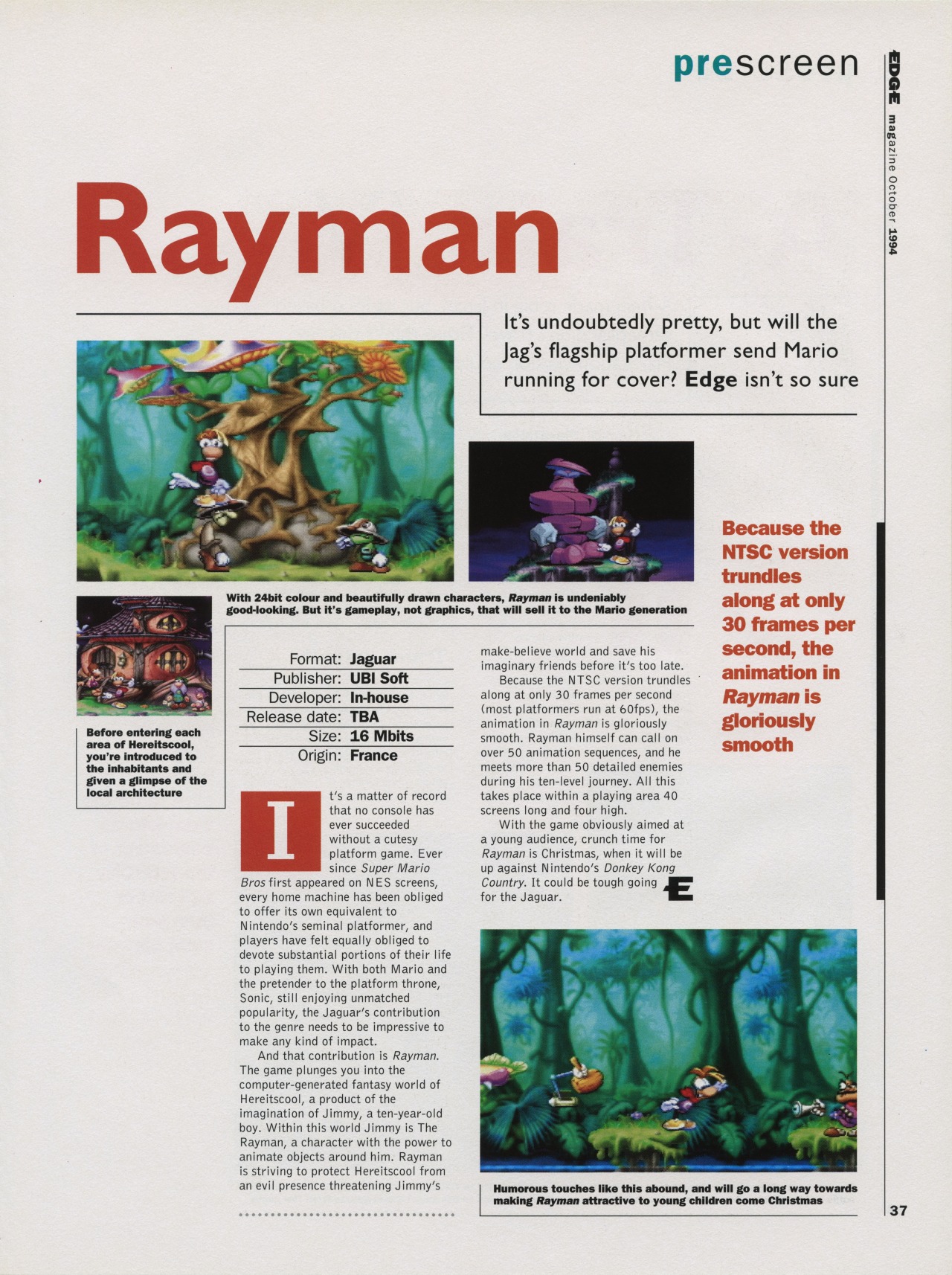EDGE #13, October 1994 – A preview of the original Rayman on the Atari Jaguar
https://darth-azrael.tumblr.com/post/182050465443/oldgamemags-edge-13-october-1994-a-preview-of
Rayman was the Atari Jaguar’s answer to games like the Super Mario Bros. franchise and the Sonic the Hedgehog franchise. It was also probably the most successful franchise to start life on the Atari Jaguar, ultimately spawning 44 games across multiple systems. The Atari Jaguar had a short life and the original Rayman was ported to other systems, including the PlayStation, where it was no doubt more successful commercially. However, it all began on the Atari Jaguar.

Rayman is a side-scrolling platform game designed with kids in mind much like the Mario and Sonic series. Rayman, the title character, starts the game with only the ability to walk, crawl and make faces. He is able to collect various other powers and abilities throughout the course of the game. Ultimately, the player must guide Rayman through six worlds to free all of the imprisoned Electoons and battle Mr. Dark.

The Jaguar version of Rayman was an excellent game and one of the better games on that system. However, the subsequent PlayStation version was better. The primary differences are that the PlayStation version has better sound and more responsive controls. However, if you are a Jaguar owner, this should be on your list of must have games. While oriented towards kids on the surface, the game play is challenging enough for die hard gamers too.

Interestingly, development for Rayman initially started on the Atari ST. Later, it was planned for the SNES CD-ROM which ended up never materializing. An incomplete SNES prototype exists and was released a couple of years ago.
There are quite a few ways to play this game. The original was released on the Jaguar, PlayStation, Saturn, DOS and various portable systems. Rayman also showed up later on the PlayStation Network and on the PlayStation Classic. If you want to play the original Jaguar version then you will need an original system and cartridge or be willing to settle for emulation.
The preview above comes from the October 1994 issue of EDGE magazine.

